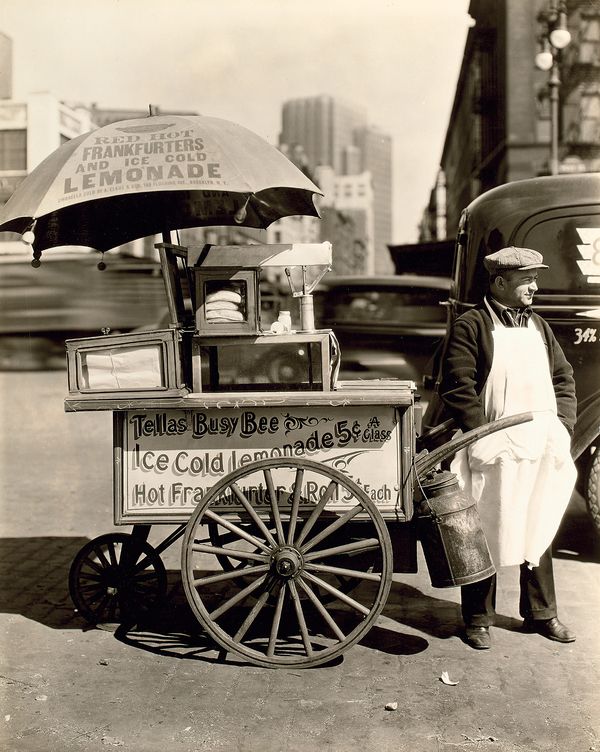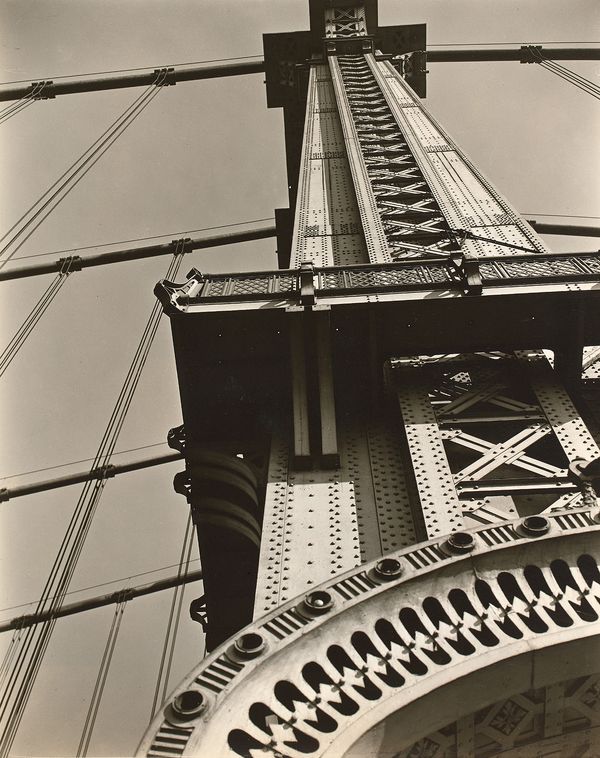Lot 1: Berenice Abbott Hot Dog Stand, West Street and North Moore Streets, Manhattan, 1936
Pioneering documentary photographer Berenice Abbott is best known for her photographs—sometimes described as portraits—of New York City. Born in 1898 in Springfield, Ohio, Abbott briefly attended Ohio State University but left the school after only two semesters. She soon moved to Europe, where she spent two years studying sculpture in Paris and Berlin. Her formal introduction to photography came from none other than Man Ray, who hired Abbott as his darkroom assistant in 1923 and quickly noticed her natural affinity for the medium.
Abbott moved back to New York in 1929, newly inspired by the growing city and the ideas she'd been exposed to in Europe. She slowly found success in her streetscapes and was commissioned by the Federal Art Project in 1935 to lead "Changing New York," the series that would ultimately come to define her career.
At almost any point of Manhattan Island, the sweep of one's vision can take in the dramatic contrasts of the old and the new...
— Berenice Abbott
Lot 12: Berenice Abbott Manhattan Bridge: Looking up from Bowery and Canal Street, 1936
In the 1930s, New York City was changing rapidly, with older vestiges of the city vanishing behind newer and ever-taller structures. Per Abbott herself, "Old New York is fast disappearing. At almost any point on Manhattan Island, the sweep of one's vision can take in the dramatic contrasts of the old and the new and the bold foreshadowing of the future. This dynamic quality should be caught and recorded immediately in a documentary interpretation of New York City. The city is in the making and unless this transition is crystalized now in permanent form, it will be forever lost...The camera alone can catch the swift surfaces of the cities today and speaks a language intelligible to all."
Lot 3: Berenice Abbott Fifth Avenue Houses, Nos. 4, 6, 8, Manhattan, 1936
Abbott's genius was that she saw it all: from the quaint rope shop's interior, which likely had not changed since the previous century, to the powerful modern structure of the Manhattan Bridge, to the stately sun-bathed homes on lower Fifth Avenue and more. In Abbott's photographs, old and new are treated with equal weight and intelligent and inclusive objectivity.
Abbott took her New York City images with an 8-by-10-inch camera, allowing her to make contact prints such as those offered in our Photographs auction on 1 October — lots 1, 2, 3, 10, 11, 12 and 104. These early photographs deliver a level of detail and tonal nuance not present in prints made in subsequent decades. This selection of Abbott's photographs gives us the opportunity to see her work in its original form and to appreciate the vision and craft that went into its making.


